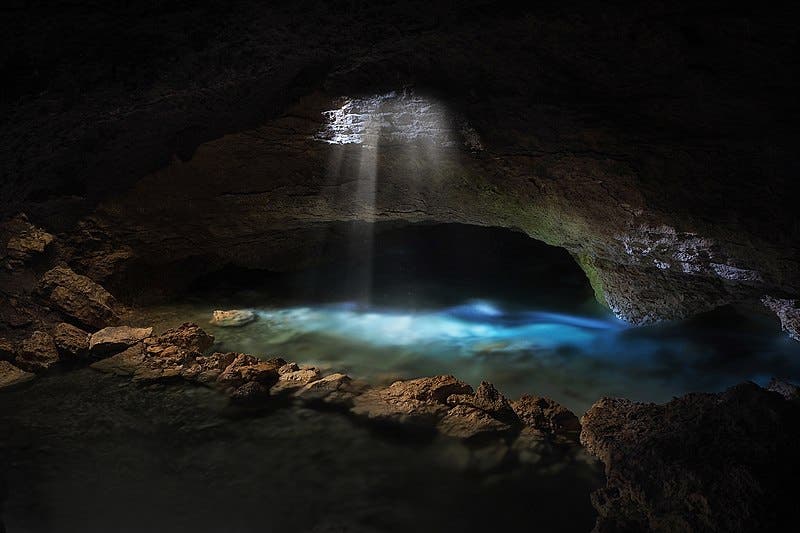Not even underground systems are free from the effects of pollution, according to a new study.

Image via Wikipedia.
The research focused on the Monte Conca cave system, a sprawling gallery of springs and pools below a nature preserve in Sicily. According to the team, despite its isolation underground, even the Monte Conca system shows signs of changes in its microbe communities with species associated with human waste.
Nowhere to hide
Monte Conca is Sicily’s longest and deepest gypsum karst system and was dug out by sulfuric acid eating into the rock. It’s not a unique occurrence, and caves of this type have been found throughout the world.
Given how secluded it is, the system was believed to be pristine, but pollution seems to make an impact even here. The team reports that the cave system experiences seasonal changes in microbial communities between its wet and dry seasons. Their results suggest that such changes are driven by surface water percolating through soils beneath agricultural and urban areas that collect contaminants and deposit them in the cave.
These chemicals then alter the makeup of the cave’s microbial communities.
While the research focused on the Monte Conca spring pool, the team says it’s indicative of the impact surface runoff has on cave microbes throughout the world. Exactly what the long-term effect of these changes will be is not well known, says lead author Dr. Madison Davis of USF’s Department of Cell Biology, Microbiology and Molecular Biology.
During the dry season, biological activity in the cave is dominated by sulfur-oxidizing bacteria, which mix oxygen from the cave with hydrogen sulfide in the water for energy. They represent over 90% of the bacteria in this ecosystem.
After heavy rainfall, however, (which is especially likely during the wet season), this type of bacteria was overshadowed by surface-derived species which the team identified as being primarily human-associated strains, including Escherichia coli and other fecal bacteria.
One sampling (the team took four samplings between 2015 and 2016) appeared to show a transition between the wet and dry seasons when potential man-made contaminants (such as Escherichia and Lysinibacillus), sulfur-oxidizing bacteria, and nitrogen-fixing bacteria all were present within the spring pool after heavy rains. This helped show that what the team picked up on was indeed the effect of surface events and not a natural occurrence in the cave.
The paper “Surface runoff alters cave microbial community structure and function” has been published in the journal PLOS ONE.









